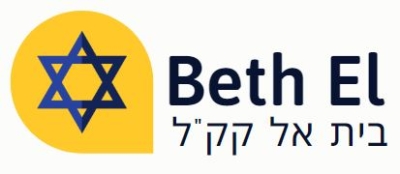Parashat Hukath
We look forward to seeing you all this Friday night, June 27 at 7pm for our lovely Kaballat Shabbat services.
Saturday June 28, we will hold our Shabbat morning services, starting at 9am, with the Torah service at approximately 9:45am. This week the Koeller family is sponsoring the kidush after services in honor of Kevin’s birthday – mazal tov to you and thank you for all you do. We hope you all can join us. This is also a special Shabbat in which several of our congregants again read from the Torah.
Sunday June 29th, there will be no Intro to Judaism class. The class will continue on July 13th.
Please note, that although next Friday night is July 4th, come rain or shine or even fireworks, we will still be welcoming in Shabbat at the regular time.
Cantor Ben-Moshe’s Weekly Message:
This week’s parshah, Hukath, includes the record of the death of Miriam the Prophetess, older sister of Aharon and Moshe. The Torah relates in the next paragraph that the People of Israel didn’t have water, and began complaining of thirst. This juxtaposition led the Midrash to posit that there was a miraculous well which followed B’nei Yisrael in the Wilderness during Miriam’s lifetime, and which disappeared after her death. In recognition of the vital role which Miriam played in the Exodus and the period of wa ndering, many Jews now place a cup of water on the table at the Passover Seder, in memory of Miriam’s well and in honor of the leadership of Miriam. As her life was a blessing to the People of Israel, may the courage and leadership of Jewish women throughout the ages be a blessing and an inspiration to us. Shabbat Shalom. Hazzan Yitzhak Ben-Moshe
Rabbi Tarlow of Texas A&M’s Center for Crypto Judaism Weekly Parasha:
This week’s parashah presents us with one of Hebrew Scripture’s most perplexing sections. The section’s name is “Chukat (law of.. )” and you will find it in the Book of Numbers 19:1-22:1. This week’s section deals with three issues that at first glance seem to be unrelated: (1) the issue of the “parah adumah” or as it is know in English “the red heifer,” (2) the death sentence imposed by G’d on Moses and Aaron, and (3) the copper snake that will serve to heal the nation of illnesses brought about by poisonous snake bites. In other words in each case there is a crisis and a remedy found within the crisis. Throughout the parashah one overriding question seems to dominate the text: How do we trust G’d even when we do not understand what is happening? When is trust appropriate and when is it foolish?
Trust is a difficult concept to comprehend. It tales years to develop trust and only a few seconds to lose it. Is trust a return to an almost Eden-like state of innocence or naivete? Without proper communication does trust die? It is noteworthy that the word “Parah Adumah” (Red Heifer) is, in linguistic terms, closely related to the “Parah Masechah/the Golden (Molten) Calf”. Additionally, the term “nachash (snake)” reminds us of the snake with poisonous words in the Garden of Eden. Now the copper snake will cure the people of the poison introduced into their bodies due to a their lack of trust in G’d. How come? What is the connection? Is the text using a “how” rather than a “what” to teach us an eternal insight into the nature of humanity?
What the text may be teaching us then, is that trust placed in the right sources can lead to holiness and goodness, but trust misplaced leads to sin and destruction. Is this text teaching us something about leadership and reminding us that leaders who believe they are gods poison a society? Is trusting an issue of in what we trust, how we trust, of where we place our trust? Is trust a concept that matures with time, that is as we mature we trust may trust people less and trust G’d more, or does trust lie outside of our personal time? Might it be that this week’s lesson in the subtlest of ways is about Israel’s growth from teenager toward adulthood?
Perhaps this week’s section is a way to remind us that the difference between an adult and a teenager is not in the body’s development but in the development of personal character. To be an adult is to know how to limit oneself. to know whom to trust and who not to trust. When does too much trust makes us naive and when too little trust makes us cynical? Might the lessons of the Red Heifer be teaching us that we need to judge people and leaders not by what they say, but rather by what they do? How gullable are we? How do we learn when to trust and when not to trust? What do you think?
